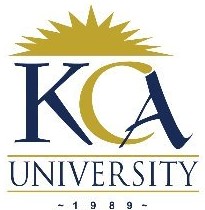 UNIVERSITY EXAMINATIONS: 2012/2013
UNIVERSITY EXAMINATIONS: 2012/2013
SECOND YEAR EXAMINATION FOR THE BACHELOR OF
SCIENCE IN INFORMATION TECHNOLOGY
BIT 11071102 INTERNET TECHNOLOGY
DATE: DECEMBER, 2012 TIME: 2 HOURS
INSTRUCTIONS: Answer Question ONE and any other TWO
QUESTION ONE
a) State four features of Internet Protocol (IP). (4 Marks)
b) Using a well-illustrated diagram, differentiate between Tier 1 ISPs, Tier 2 ISPs and
Tier 3 ISPs (6 Marks)
c) Describe briefly the hierarchical structure of the Internet. (5 Marks)
d) Describe how information travels through the Internet. (6 Marks)
e) State any five things you need to remember to stay safe with e-mails. (5 Marks)
f) Differentiate between the Internet and the World Wide Web (WWW). (4 Marks)
QUESTION TWO
a) Explain briefly four main TCP features. (4 Marks)
b) With the aid of diagrams, explain how content is accessed from:
i. Web servers (4 Marks)
ii. Streaming servers (3 Marks)
c) Discuss briefly the following:
i. Hosts (3 Marks)
ii. Routers (3 Marks)
d) What is IP routing? (1 Mark)
e) State any two protocols that were created to assist SMTP. (2 Marks)
QUESTION THREE
a) Why are collaboration tools considered important communication tools in a modern
organization?. (4 Marks)
b) Discuss the ethical dilemas that have led to a requirement for an ICT code of ethics.
(6 Marks)
c) Outline any five dangers of the Internet. (5 Marks)
d) Outline five features of the internet that makes it pose special challenges (5 Marks)
QUESTION FOUR
a) Courses delivered using network or Internet resources are often called online learning
experiences, or e-learning. The availability of e-learning courseware has multiplied
the resources available to students many times over. Discuss the benefits of the
e-learning courseware. (6 Marks)
b) In order to support the immediate delivery of the millions of messages being
exchanged between people all over the world, we rely on a web of interconnected
networks. These data or information networks vary in size and capabilities, but all
networks have four basic elements in common. Outline these four elements.
(4 Marks)
c) Describe briefly the following forms of communication:
(i) Instant Messaging (2 Marks)
(ii) Weblogs (blogs) (2 Marks)
(iii) Wikis (2 Marks)
(iv) Podcasting (2 Marks)
d) In relation to search engines, what is a “Spider”? (2 Marks)
QUESTION FIVE
a) The popularity and spread of broadband has added a new dimension to the old
problem of malicious software. Because a broadband connection is “always on”, it is
easier for an attacker to mount a sustained assault on your computer, systematically
probing it for weaknesses and vulnerabilities. Describe any four forms of attack that
can affect a user surfing the Internet. (4 Marks)
b) Discuss the evolution of the Internet societies (6 Marks)
c) What makes a community? (4 Marks)
d) What makes online communities different? (6 Marks)